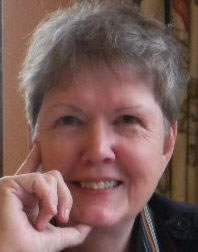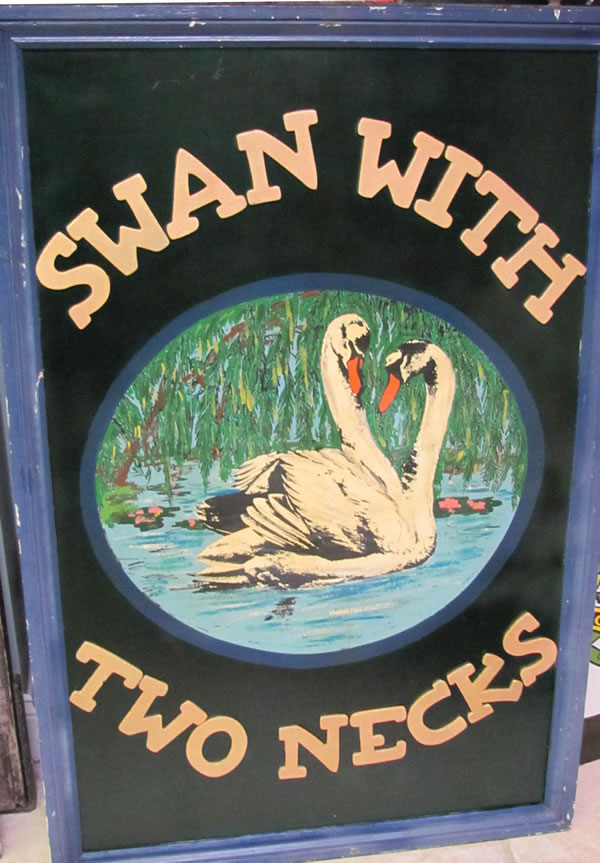
Barbara Plott
OK, this is my first attempt at a blog, and I thought it might be a good idea to explain what English Pub Signs are about. Not by any means, am I an expert, but if you’ve ever been to my Added Oomph! Showroom, not only do I search for these signs all over England, but I also LOVE English pub signs…and most especially the older hand painted ones!
My heritage is Welsh and Scottish so I can honestly claim some relationship (though somewhat farfetched) to these signs.
Most of all, I love the fact they usually tell a story or at least a bit of the town or county history. An article in Britain’s Colourful Pub Signs states “pubs were never named by accident and each sign invariably has a story behind it.”

Added Oomph! has a pub sign called Swan With Two Necks and I’m sure that at some point that town had a swan with two necks or perhaps a slightly inebriated customer saw a swan one night and later assured everyone that a two necked swan existed in the town pond!! Now, having said all that, there is also a story in Wikipedia about pub names that gives another explanation…”. In the UK, swans have traditionally been the property of the reigning Monarch. However, in the 16th century, Queen Elizabeth I granted the right of ownership of some swans to the Worshipful Co. of Vintners. In order to be able to tell which swan belonged to the Vintners, it was decided that Vintners’ swans should have their beaks marked with two notches, or nicks. In those days, “neck” was another form of “nick”.” And, therefore, the swan with two necks!
The history behind the pub sign began with Richard II and the Royal Act of 1393…“Whosoever shall brew ale in the town with the intention of selling it, must hang out a sign”. The majority of people in the 14th century were illiterate, so a painted and descriptive sign was preferable to a written one. Inspiration was very often royalty or military battles or even religion (often moving back and forth between Catholicism and/or Protestant based on the whims of the Monarch). The signs could also be keyed to various guilds and trades or sports and legends.
Apparently, even before pubs, as we know them, came about, the earliest inns were religious based and catered to knights and pilgrims on their way to meet Richard the Lionhearted and join the Crusades.
I visited Ye Olde Trip to Jerusalem pub in Nottingham which was established in 1189 and claims to be the oldest pub in England. I toured the cellars where, to this day, they brew their beer in the cooling rooms carved from rocks beneath Nottingham Castle.
Sometimes there’s quite a bit of variation in the explanations, probably because the meanings have changed over the years or the original meaning has been lost.
I’ll include a little of the information I’ve found concerning some of the most common names in my next blog, but if you’d like to know more of the historical background of many of the signs, please check out A History of Britain and Its Pub Signs, Britain’s Colourful Pub Signs, Wikipedia, the Smithsonian, and many other sources on the internet.
~ Barbara Plott, addedoomph@northstate.net ~
